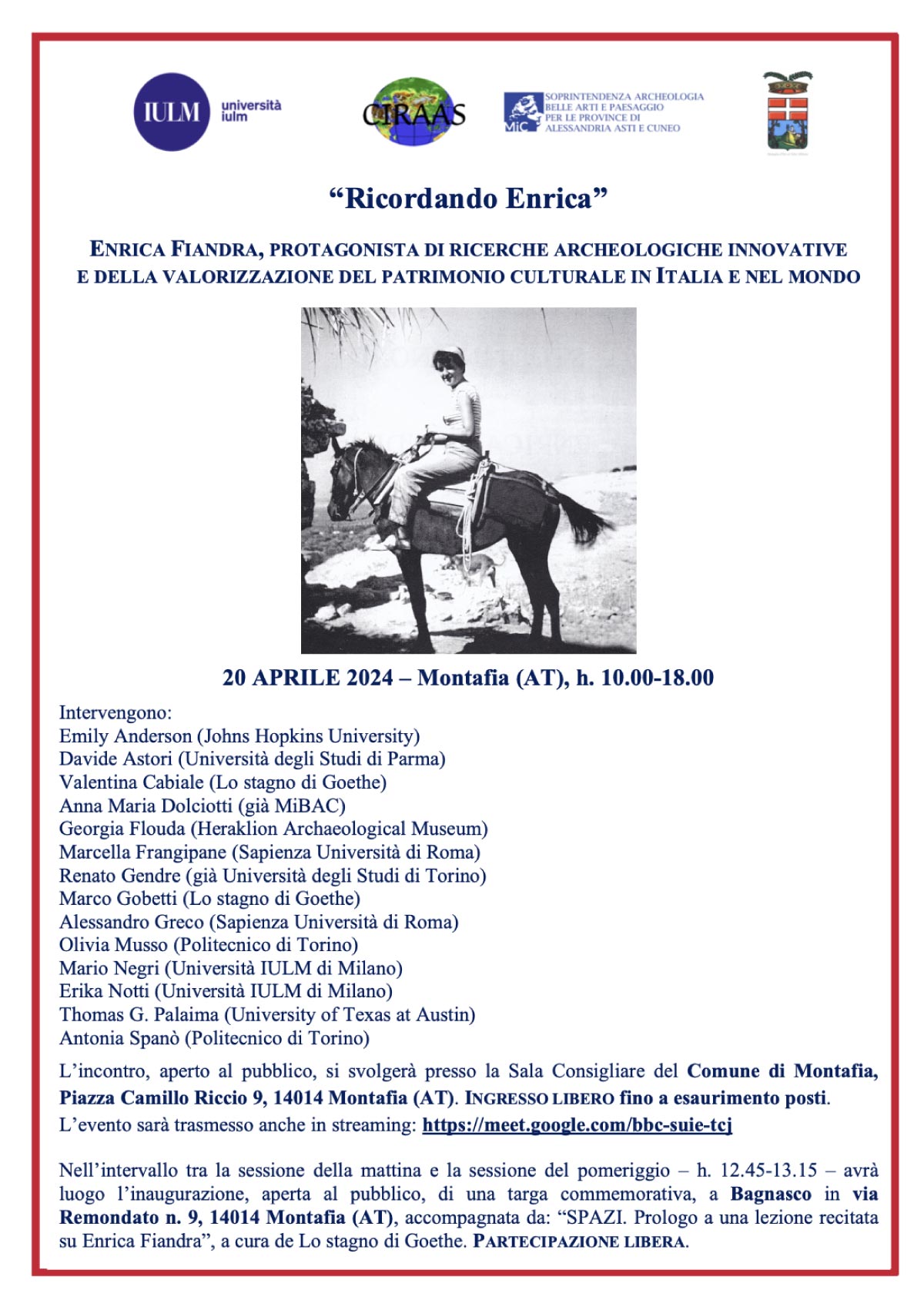The ‘Rhadamanthys’ Digital Archives’ Project. New Technologies for Research and Enhancement of Archaeological and Epigraphic Evidence from the Ancient Mediterranean
(ed. Erika Notti)
‘Rhadamanthys’ Digital Archives’. New Technologies for Research and Enhancement of Archaeological and Epigraphic Evidence from the Ancient Mediterranean (“Archivi digitali di Radamanto”. Nuove tecnologie per la ricerca e la valorizzazione di documenti archeologici ed epigrafici dal Mediterraneo antico”), is a research project funded by the Department of Humanities of IULM University (Milan, Italy) in order to promote research, dissemination and the enhancement of the Mediterranean cultural heritage. Among the primary aims of the Project are: the development of on-site studies in archaeological sites and museums and activities for research and didactic purposes; the organization of public lectures, workshop, conferences and international events.
The research deals with the history and archaeology of the Aegean region within the Eastern basin of the Mediterranean, focusing on the cultures, languages and (verbal and non-verbal) communication systems of pre-classic civilizations. Particular attention is attributed to early attempts at bureaucracy, administration and writing practices connected with the development of palatial societies. The lines of research are articulated on multidisciplinary levels of analysis – historical, archaeological, linguistic, philological, epigraphic, paleographic and pinacological. The research focusses primarily on a selection of Minoan documents in order to investigate the spread of writing in the Bronze Age Aegean – i.e. cretulae, administrative and non-administrative texts, sealed documents, tablets, marks – and the relationships between Cretan scripts. In particular, this line of research leads towards the archives of Phaistos in Cretan Mesara, which has so far yielded several unique examples alluding to the “dawn of writing” and early experimental attempts at using Cretan scripts.
‘Rhadamanthys’ Digital Archives’ thus draws inspiration from the heuristic heritage of Italian pioneers in Aegean studies. The first results of the Project have therefore been presented during the Enrica Fiandra’s Memorial Day (20th April 2024, Montafia-Bagnasco AT) – the public event organized by IULM (Erika Notti, Giovanna Rocca, Massimo De Giuseppe, Filippo Avilia), in close collaboration with CIRAAS (Centro Centro Internazionale Ricerche Archeologiche, Antropologiche e Storiche) and the Municipality of Montafia.
The first reports (“Rendiconti”) of the speeches given by the Italian and international scholars who gathered on that occasion are included in “QUADERNI LOMBARDO-PIEMONTESI. Epigrafia, glottologia e letteratura”, a new series of scientific fascicules relating to epigraphy, historical linguistics and literature, directed by Erika Notti, with the collaboration of Mario Negri, Renato Gendre and Mario Enrietti, printed by Tipografia Astese (I 2024 – forthcoming).

In recent years, digitalisation and new archaeometric and advanced imaging techniques have proved to be formidable supplementary research tools, acting as a powerful catalytic spurring renewed fervour in the fields of archaeology, epigraphy, palaeography and cultural heritage in general. The ‘Rhadamanthys’ Digital Archives’ Project therefore shares the mission of the Pa-i-to Epigraphic Web Project continuing the collaboration between Alessandro Greco, Georgia Flouda and Erika Notti started in 2017. Therefore, the Pa-i-to website now includes informative and photographic materials resulting also from the collaboration of Rhadamanthys’ Project, in its related sections organized by specific topic (Missions and Linear A).
This website is constantly and gradually updated as researches go on, and new scientific results are presented in a more extended form in printed publications.
The authors wish you pleasant navigation.
***
Data License. The 2D+ and 3D-models of artifacts presented in the database of paitoproject are for scientific, non-profit use of scientists. All 2D+ and 3D-models are subject to copyright laws with all rights reserved.
Reproduction, publication or commercial use of these 2D+3D-datasets is strictly prohibited without prior written permission. For further information, contact: Prof Alessandro Greco a.greco@uniroma1.it




